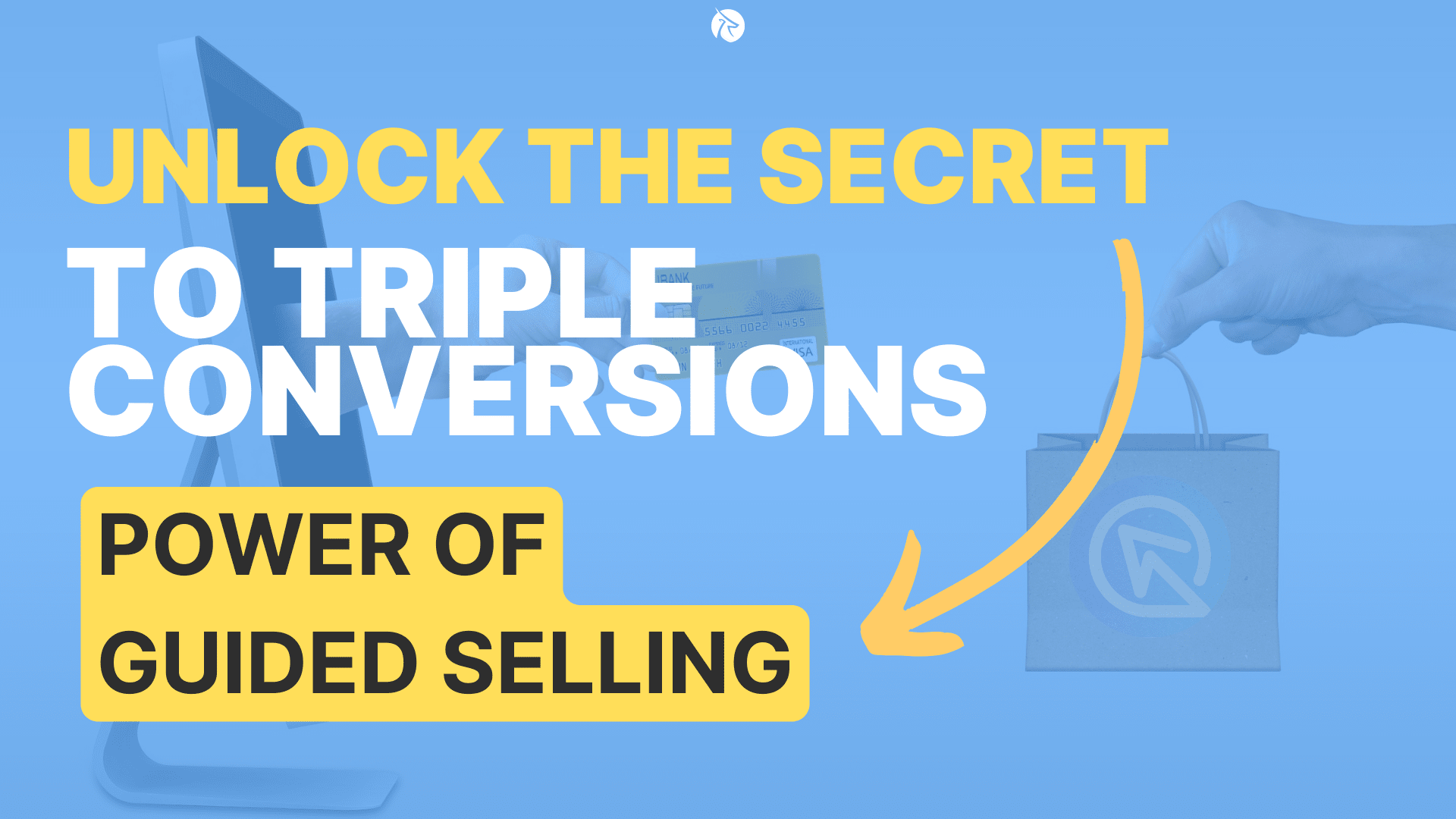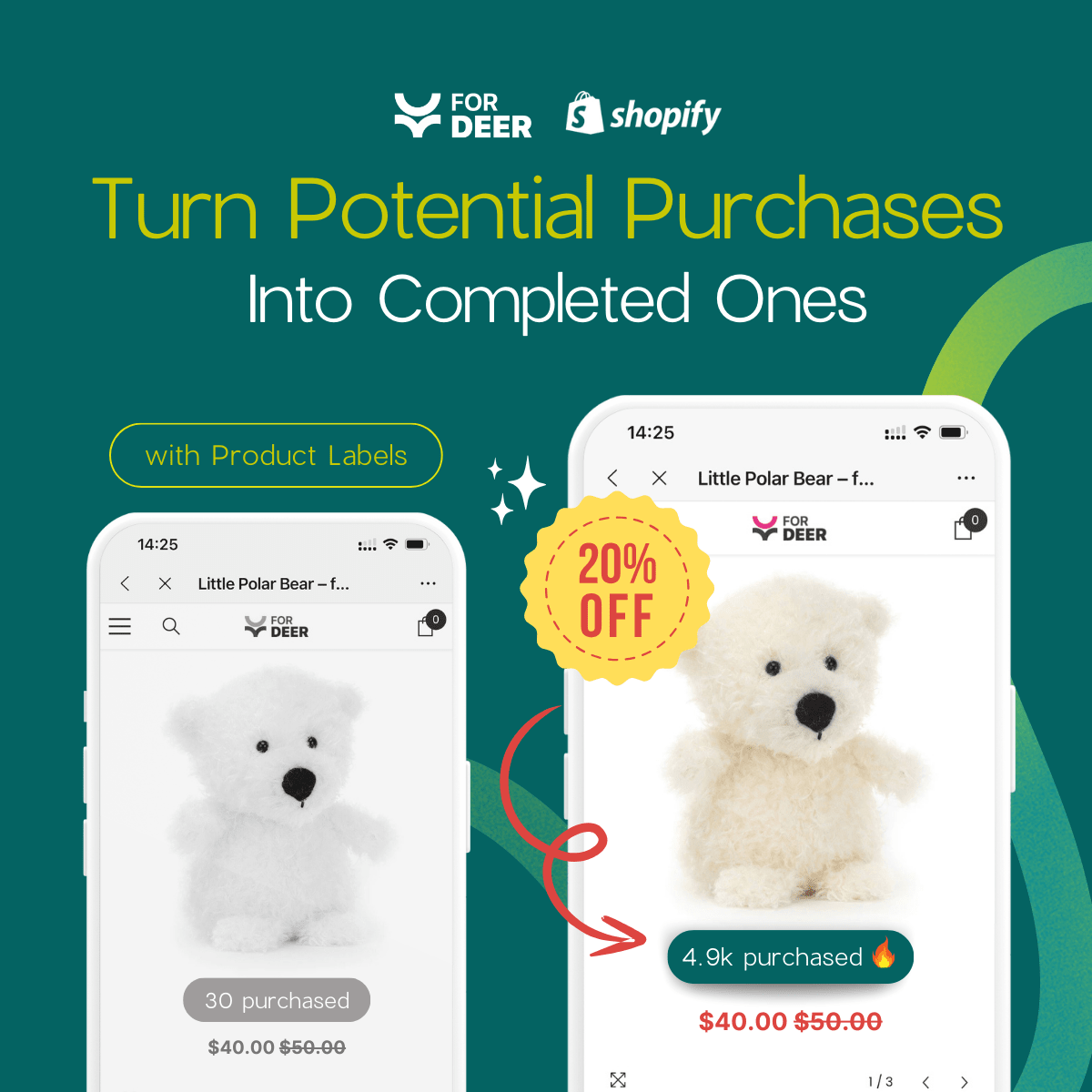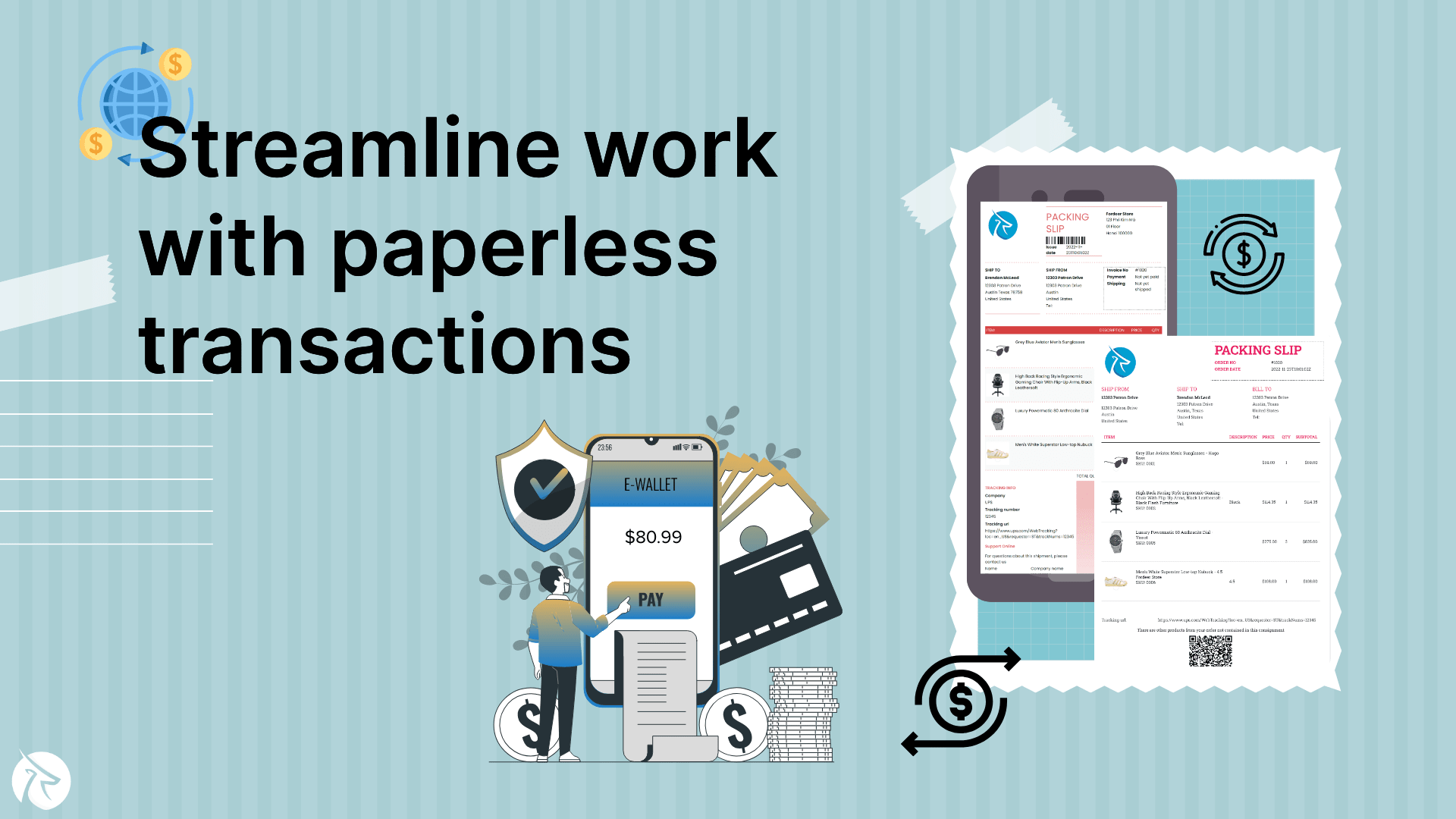Unlocking the Secret to Tripling Your eCommerce Conversion Rate: The Power of Guided Selling

Navigating the tumultuous waters of eCommerce can be daunting, especially when around 98% of visitors to online stores exit without making a purchase. For owners and marketing managers of eCommerce stores, this is a concerning statistic.
Despite diligent efforts in optimizing traffic, refining marketing strategies, and maintaining an active presence on social media, the elusive goal of increasing conversion rates remains a significant challenge.
In this era of mounting digital traffic costs, leveraging the best Shopify popup apps to enhance return on investment (ROI) on marketing spend is crucial. One methodology stands out, embraced by brands that have deciphered eCommerce success: guided selling.
The Pain Point: A Sea of Potential Unconverted
With the escalating costs involved in driving website traffic and the painstaking refinement of targeted ads, the persistently low conversion rates are more than just a minor hurdle. So, why do less than 2% of visitors end up making a purchase, and how can this conversion conundrum be resolved?
Leveraging Guided Selling
Reflect on your last in-store shopping experience. The personal interaction, the tailored advice, and the specific product recommendations based on individual needs create a shopping experience that is both engaging and enlightening. This personalized consultation and guidance are often absent in online shopping, leaving a void that, when filled, can significantly enhance the customer's journey.
What is Guided Selling?
Guided selling is a process in which businesses leverage technology, data, and customer interaction to guide customers through the buying process, offering personalized recommendations and advice based on individual needs and preferences. This approach mimics the interaction a customer would have with a knowledgeable salesperson in a brick-and-mortar store but brings it into the digital space.
How Does It Work?
Understanding Customer Needs
The pursuit to comprehend customers’ needs, preferences, and pain points is paramount in the realm of guided selling. The strategy here involves the utilization of interactive tools, quizzes, and AI-driven chatbots, all aimed at gleaning valuable customer data and deciphering their shopping motivations.
It's not merely about collecting data but diving deep into the motivations that drive each click, ensuring every recommendation is steeped in a comprehensive understanding of the customer's desires.
Personalized Recommendations
Providing tailored recommendations steps into the spotlight as a critical component, where the objective is clear: to offer relevant and individualized product or service suggestions.
This involves meticulously leveraging the collected data, enabling algorithms and machine learning models to craft recommendations that resonate with the customer’s unique needs and preferences. The underpinning principle here is precision, ensuring that every suggestion presented is finely tuned to the individual's specific desires and requirements.
Enhanced Customer Experience
Facilitating decision-making and enhancing the customer experience intertwine as pivotal elements in the execution of guided selling, each playing a significant role in not only propelling immediate sales but also in crafting a memorable, positive shopping journey.
Aided by the presentation of detailed product information, comparisons, reviews, and ratings, customers navigate through their options with a sense of empowerment and assurance, making decisions they can feel confident and content with. Simultaneously, every step of their online shopping journey, from initial landing to final purchase, is enveloped in a smooth, engaging, and stress-free experience.
This is achieved by ensuring seamless navigation, enabling personalized interactions, and deploying supportive content throughout their pathway, which not only boosts the likelihood of a purchase but also subtly transitions customers into brand advocates, fortifying the brand's stature in the competitive eCommerce sphere.
Building Trust
Through guided selling, brands tactfully navigate through this aspect by offering a transparent, informative, and user-centric shopping experience. The objective shifts to not merely facilitating a transaction but to ensuring that every interaction, recommendation, and piece of advice provided is steeped in authenticity and understanding of the customer's needs.
When customers perceive that the recommendations provided are genuinely in line with their preferences and that the brand is invested in aiding their purchasing journey, trust is inherently cultivated.
This trust, once established, not only encourages an immediate purchase but also seeds a relationship that can lead to sustained customer loyalty, repeat purchases, and invaluable word-of-mouth promotion, fortifying the brand’s presence and reputation in the bustling e-commerce domain.
Benefits of Guided Selling
Increased Conversion Rates
Guided selling enhances conversion rates by methodically narrowing down options and eradicating potential customer uncertainty, thus strategically steering customers towards the most pertinent products or services.
This focused approach means customers are presented with options that resonate with their needs and desires, making them more likely to finalize a purchase and appreciate the streamlined decision-making process.
Higher Customer Satisfaction
The personalized approach intrinsic to guided selling does not merely assist customers in locating the right product; it also crafts a shopping experience where the customer feels valued and understood, thereby nurturing higher satisfaction levels.
When customers sense that a brand is genuinely invested in catering to their individual needs and preferences, their shopping experience transcends mere transactionality and becomes positively memorable.
Enhanced Customer Loyalty
Beyond just a single positive encounter, a tailored, personalized shopping experience lays down the foundational stones for enduring customer loyalty, ensuring not just repeat purchases but also transforming customers into brand advocates.
By consistently delivering a shopping experience that is both meaningful and personalized, brands silently and effectively weave a narrative of trust and reliability that customers are inclined to return to and endorse.
Improved Insights
The insightful data derived from interactions during guided selling not only shine a light on customer preferences and behavior but also empower businesses to continually refine and innovate their offerings and marketing strategies.
By decoding the nuanced needs, pain points, and desires of the customers through this data, businesses can pivot and adapt their strategies to mirror evolving market trends and customer expectations, ensuring sustained relevance and appeal in a dynamic eCommerce landscape.
A Virtual Personal Shopper for Every Store
Guided selling, as facilitated by tools like the Shop Quiz: Product Recommender, plays a crucial role in modern eCommerce, allowing online stores to replicate the personalized, consultative approach of in-person shopping experiences.
By aligning customer needs with the right products, it not only optimizes conversion rates but also builds lasting relationships between brands and their customers.
Imagine offering each visitor to your online store a personalized shopping consultation! The Shop Quiz: Product Recommender does precisely this.
It immerses customers in an interactive experience, offering personalized product suggestions based on individual needs and preferences, much like a personal shopper.
Tailoring Strategies to Reflect Brand Individuality
Every brand is distinctive, and every strategy should be reflective of this uniqueness. By incorporating extensive customization and employing targeted strategies, every interaction, design element, and communication can be tailored to align seamlessly with your brand’s identity and values.
A product quiz app allows comprehensive customization to echo your brand's design and communication ethos. From the design to the questions, every element can be tailored to ensure coherence with your brand's identity.
Essential Features for Guided Selling
Every good quiz app should offer features like Conditional Logic, which tailors questions based on previous answers, enhancing engagement and leading to higher conversion rates.
Additionally, it should enable lead capture, offering incentives in exchange for contact details, and provides valuable insights into consumer behavior and preferences.
Demonstrated Success
A product recommendation app, by leveraging extensive customer-provided data, continually refines the product discovery process. Stores employing such apps have witnessed conversion rates escalating from 2% to 5% and a noteworthy 20% surge in Average Order Value (AOV).
Strategies and Their Impact
By integrating innovative strategies like guided selling and utilizing actionable consumer insights, brands can ensure enhanced engagement and significantly improved conversion rates.
The use of social proof marketing on Shopify, for instance, can instill confidence and encourage purchase decisions by displaying customer testimonials, ratings, and real-time purchase notifications.
10 Common Guided Selling Strategies
Guided selling strategies, which refer to utilizing technological tools and consumer data to guide shoppers through a personalized buying process, are pivotal in refining customer experience and boosting conversion rates. Here are some prevalent guided selling strategies and their impact:
#1 Interactive Product Quizzes
- Strategy: Implement quizzes that ask shoppers a series of questions to understand their needs, preferences, and purchasing motives, and subsequently, offer suitable product recommendations.
- Impact: Enhances user engagement, provides a personalized shopping experience, and optimizes product discovery, leading to improved conversion rates.
#2 Chatbots and Virtual Assistants
- Strategy: Deploy AI-powered chatbots or virtual assistants to provide real-time, interactive communication, helping customers find products, answer queries, and navigate the site.
- Impact: Improves customer support, facilitates a seamless buying process, and fosters an interactive customer journey.
#3 Dynamic Product Recommendations
- Strategy: Utilize machine learning algorithms to analyze customer data and provide dynamic product recommendations based on browsing behavior, purchase history, and similar user profiles.
- Impact: Increases average order value through upselling and cross-selling, enhances the relevancy of product suggestions, and boosts user engagement.
#4 Customization Tools
- Strategy: Implement tools that allow customers to customize products according to their preferences, visualizing the final product before purchasing.
- Impact: Encourages customer interaction, increases perceived product value, and often leads to higher customer satisfaction.
#5 Augmented Reality (AR) Experiences
- Strategy: Integrate AR technology to allow customers to virtually try out or visualize products in their environment before purchasing.
- Impact: Reduces the gap between online and offline shopping experiences, lowers return rates, and enhances the decision-making process.
#6 Comparison Tools
- Strategy: Provide tools that allow customers to compare different products based on features, price, and customer reviews.
- Impact: Aids informed decision-making, improves user satisfaction, and provides value-added service.
#7 Social Proof and Reviews
- Strategy: Showcase customer reviews, testimonials, and user-generated content to validate product quality and performance.
- Impact: Builds trust and credibility, alleviates purchase anxieties, and often sways buying decisions.
#8 Navigation Assistants
- Strategy: Offer tools and filters that assist customers in effortlessly navigating through product categories and finding desired items.
- Impact: Enhances user experience, reduces frustration, and streamlines the product discovery process.
#9 Content-driven Guided Selling
- Strategy: Develop content that guides customers through the purchasing process, like how-to guides, tutorials, and educational blogs.
- Impact: Establishes brand authority, provides value to the customer, and subtly guides them through the sales funnel.
#10 Personalized Email Campaigns
- Strategy: Send personalized emails to customers based on their behavior, preferences, and previous interactions with the brand.
- Impact: Enhances customer retention, fosters loyalty, and improves conversion rates through targeted communication.
Employing guided selling strategies directly impacts customer satisfaction by creating a seamless, interactive, and personalized buying journey. Moreover, it maximizes the likelihood of converting browsers into buyers by mitigating decision fatigue and providing relevant, tailored solutions, thereby optimizing the overall shopping experience and significantly influencing a brand's bottom line.
Wrapping Up
The key to unlocking a threefold increase in eCommerce conversion rates lies in revolutionizing the online shopping paradigm. By infusing guided selling strategies and employing innovative approaches like social proof marketing on Shopify, brands can offer a more engaging, personalized, and interactive customer journey.
The secret to tripling eCommerce conversion rates is rooted in transforming the online shopping experience. Integrating guided selling through a Product Recommendation Quiz app ensures that every visitor enjoys a tailored and engaging journey, boosting engagement, sales, lead generation, and retargeting opportunities.
So, make the most of your traffic acquisition investment. Embrace the revolutionary approach of guided selling and witness your conversion rates and customer satisfaction levels reach new heights.
For more invaluable information, stay updated with Fordeer Team!
- Install Fordeer Apps for Free
- Get immediate assistance by chatting with us.
- Join Fordeer Commerce Community for fresh app updates, expert tips, and private deals.
Their best-selling app is Product Recommendation Quiz, which is available for multiple eCommerce platforms, including Shopify, WooCommerce and Magento.











